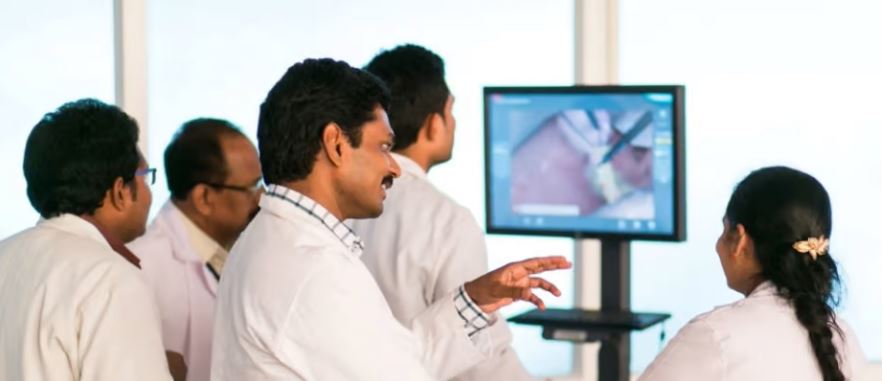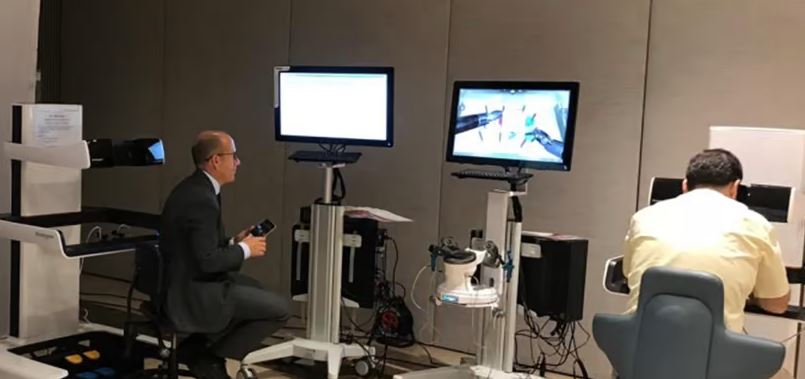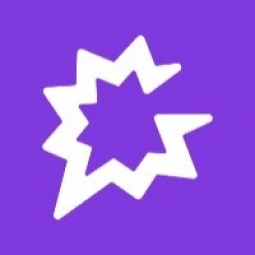Technology Category
- Platform as a Service (PaaS) - Application Development Platforms
- Sensors - Level Sensors
Applicable Industries
- Cement
- Education
Applicable Functions
- Quality Assurance
- Sales & Marketing
Use Cases
- Experimentation Automation
- Virtual Training
Services
- Testing & Certification
- Training
About The Customer
Highspot is a software development company based in Seattle, WA. Founded in 2012, the company has grown to over 1000 employees. Highspot specializes in sales enablement software, providing solutions that help sales teams to improve their performance and productivity. The company is committed to innovation and continuous improvement, as evidenced by their decision to implement a new sales methodology. Highspot's VP of Revenue Enablement, Kelly Lewis, led the initiative, recognizing the need for a smooth and effective process that would enable their sellers to quickly adapt to changes in the macro-economic environment.
The Challenge
Highspot, a sales enablement software company, was faced with the challenge of implementing a new sales methodology. The company wanted to offer a series of trainings to help sales reps understand the messaging and how to use it with clarity and precision. The implementation required managers, sales reps, and marketing to be on the same page about goals and outcomes. They also wanted to monitor what was working and what wasn't throughout the process. The macro-economic environment was shifting, adding pressure on the sellers. Therefore, Highspot needed to make learning light and create a way for their sellers to quickly adapt to the changes.
The Solution
Highspot integrated Gong with their own platform to put a new methodology in place, test it, and track its success. They started by testing the training and coaching with a small group to understand what parts were effective and which were not. They used Gong snippets to provide real-world examples of new talk tracks in action, which helped the beta test reps to see if it fit the new methodology criteria and build confidence. Once the training was locked down, it was rolled out to the entire team. They integrated Gong Academy’s rubrics into the training phase, allowing sales reps to get a taste of how they might actually do on an actual call using their new material. They also integrated Gong’s trackers to track the progress of the new methodology.
Operational Impact

Case Study missing?
Start adding your own!
Register with your work email and create a new case study profile for your business.
Related Case Studies.

Case Study
System 800xA at Indian Cement Plants
Chettinad Cement recognized that further efficiencies could be achieved in its cement manufacturing process. It looked to investing in comprehensive operational and control technologies to manage and derive productivity and energy efficiency gains from the assets on Line 2, their second plant in India.

Case Study
Revolutionizing Medical Training in India: GSL Smart Lab and the LAP Mentor
The GSL SMART Lab, a collective effort of the GSL College of Medicine and the GSL College of Nursing and Health Science, was facing a challenge in providing superior training to healthcare professionals. As clinical medicine was becoming more focused on patient safety and quality of care, the need for medical simulation to bridge the educational gap between the classroom and the clinical environment was becoming increasingly apparent. Dr. Sandeep Ganni, the director of the GSL SMART Lab, envisioned a world-class surgical and medical training center where physicians and healthcare professionals could learn skills through simulation training. He was looking for different simulators for different specialties to provide both basic and advanced simulation training. For laparoscopic surgery, he was interested in a high fidelity simulator that could provide basic surgical and suturing skills training for international accreditation as well as specific hands-on training in complex laparoscopic procedures for practicing physicians in India.

Case Study
IoT platform Enables Safety Solutions for U.S. School Districts
Designed to alert drivers when schoolchildren are present, especially in low-visibility conditions, school-zone flasher signals are typically updated manually at each school. The switching is based on the school calendar and manually changed when an unexpected early dismissal occurs, as in the case of a weather-event altering the normal schedule. The process to reprogram the flashers requires a significant effort by school district personnel to implement due to the large number of warning flashers installed across an entire school district.

Case Study
Digital Transformation of Atlanta Grout & Tile: An IoT Case Study
Atlanta Grout & Tile, a Tile, Stone & Grout restoration company based in Woodstock, Georgia, was facing challenges with its traditional business model. Despite steady growth over the years, the company was falling behind the web revolution and missing out on the opportunity to tap into a new consumer base. They were using independent software from different vendors for each of their department information and workforce management. This resulted in a lot of manual work on excel and the need to export/import data between different systems. This not only increased overhead costs but also slowed down their response to clients. The company also had to prepare numerous reports manually and lacked access to customer trends for effective business decision-making.

Case Study
Implementing Robotic Surgery Training Simulator for Enhanced Surgical Proficiency
Fundacio Puigvert, a leading European medical center specializing in Urology, Nephrology, and Andrology, faced a significant challenge in training its surgical residents. The institution recognized the need for a more standardized and comprehensive training curriculum, particularly in the area of robotic surgery. The challenge was underscored by two independent studies showing that less than 5% of residents in Italian and German residency programs could perform major or complex procedures by the end of their residency. The institution sought to establish a virtual reality simulation lab that would include endourological, laparoscopic, and robotic platforms. However, they needed a simulator that could replicate both the hardware and software of the robotic Da Vinci console used in the operating room, without being connected to the actual physical console. They also required a system that could provide both basic and advanced simulation training, and a metrics system to assess the proficiency of the trainees before they performed surgical procedures in the operating theater.








